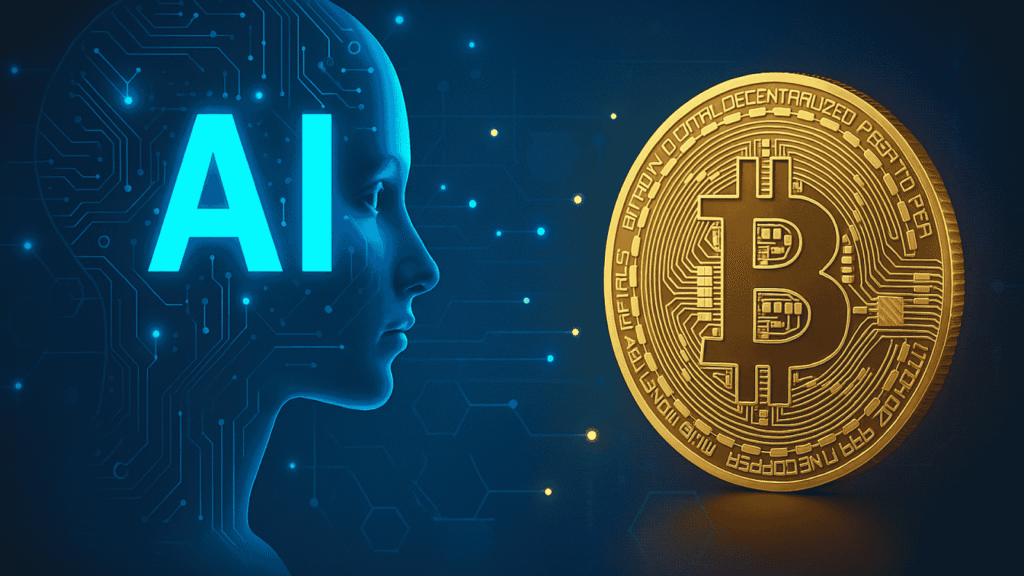Miles Deutscher, a well-known crypto analyst and investor, has recently captured attention with his bold claim: the AI market is set to outpace the growth of crypto in the coming years. In a market update on July 14, Deutscher highlighted how artificial intelligence applications—ranging from autonomous agents to decentralized compute—are rapidly converging with blockchain, offering a larger and more sustainable growth trajectory than crypto alone.
From Token Speculation to Infrastructure Revolution
Deutscher’s argument centers on fundamentals. While many crypto projects are still battling cyclical price patterns, AI-backed protocols are delivering tangible products with revenue-generating use cases. Projects like AetherGPT, Render Network, and Ocean Protocol are not only raising funds—they’re building infrastructure for industries like finance, logistics, and creative arts.
He notes that AI-focused tokens saw a combined market cap surge of over $4 billion in Q2 2025, outpacing the growth of many pure-play crypto assets. This shift reflects broader investor sentiment: the focus is moving from speculative growth to scalable infrastructure with real demand.
Key Drivers Behind Deutscher’s Forecast
- Adoption of AI-Blockchain Hybrids: Protocols enabling decentralized AI pipelines—where training, deployment, and payments occur on-chain—are gaining increasing interest from both developers and enterprises.
- Institutional Capital Flow: Venture capital investment into AI/crypto projects reached a record $1.2 billion in Q2—nearly double the same quarter last year.
- Enterprise Integration: Major corporations in the energy, supply chain, and entertainment sectors are piloting blockchain-integrated AI solutions, citing benefits in transparency and efficiency.
- Debottlenecking Centralization: AI projects on decentralized networks offer stronger data privacy and cost efficiency—appealing traits in an increasingly privacy-conscious regulatory environment.
A Broader Narrative for Investors
According to Deutscher, the path forward for retail and institutional investors lies not in choosing sides but in embracing both crypto and AI. He suggests allocating 40% of digital portfolios to infrastructure—the backbone of blockchain and DeFi—while assigning another 40% to hybrid AI-crypto projects that have working products and real integrations.
The remaining 20% could be allocated to speculative crypto plays, including select meme coins and emerging blockchain platforms with high-risk, high-reward dynamics. For those willing to wait, the AI-crypto crossover space might deliver the best returns over the next five years.
Potential Risks and Market Realities
Deutscher is careful to acknowledge potential pitfalls. AI regulations, data sovereignty concerns, and intellectual property rights still pose significant hurdles. Additionally, scalability challenges remain as decentralized compute networks strive to match centralized rivals.
Still, his core thesis holds: the convergence of AI and blockchain is unlocking new use cases—on-chain identity verification powered by AI, decentralized data marketplaces, and algorithmic trading bots—which are reshaping the narrative beyond speculative token movements.
What It Means for the Crypto Ecosystem
- Innovation Acceleration: The AI-crypto vertical is attracting top talent from traditional tech firms, accelerating both development and adoption cycles.
- New Funding Models: AI-crypto startups are securing larger, earlier-stage investments, often from crossover funds that recognize long-term value creation.
- Competitive Edge for Hybrid Tokens: Assets like REN, The Graph, and Fetch.ai are gaining reconsideration as foundational tools for the decentralized AI economy.
The Road Ahead
Deutscher’s vision sets a tone for how investors, developers, and policymakers should approach the future of Web3. Rather than viewing AI and crypto as competing sectors, he urges stakeholders to see them as complementary—part of a larger movement toward decentralized, intelligent infrastructure.
As institutional flows continue and on-chain innovation accelerates, those observant enough to catch this wave may find themselves at the forefront of the next technological revolution.


